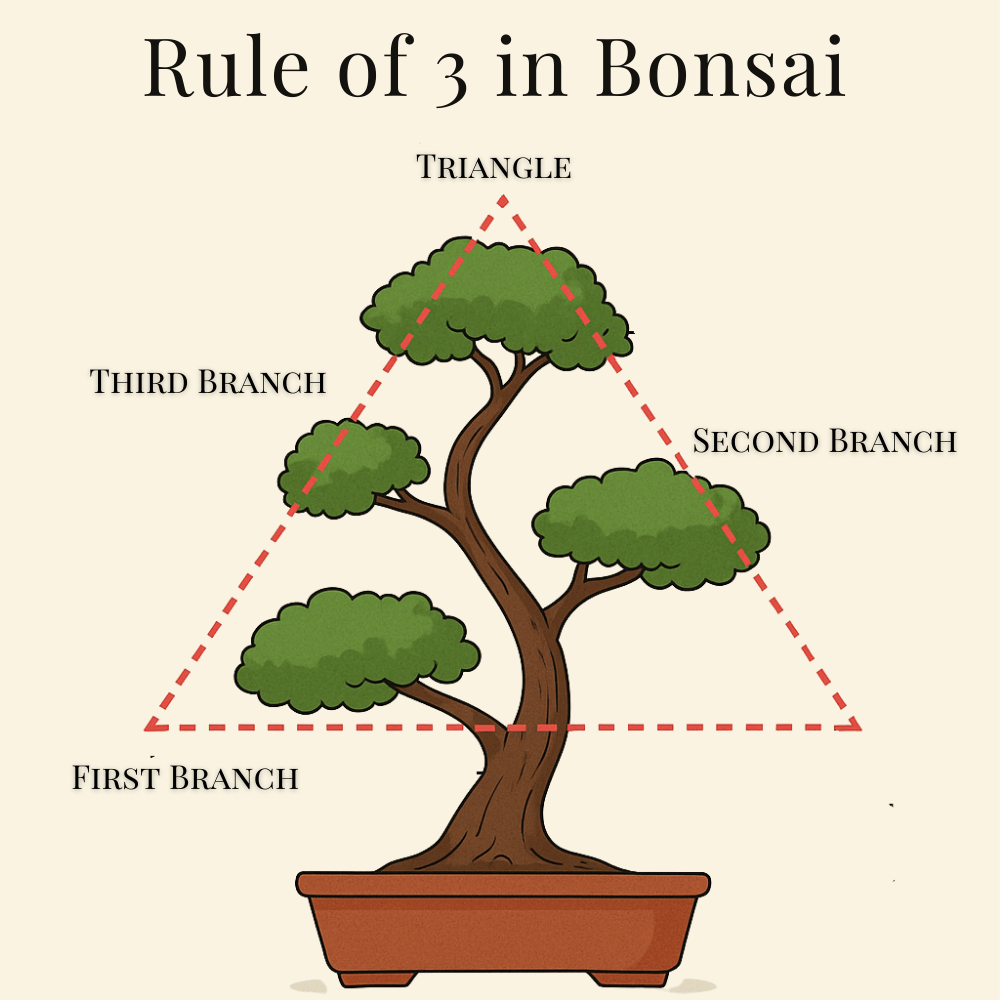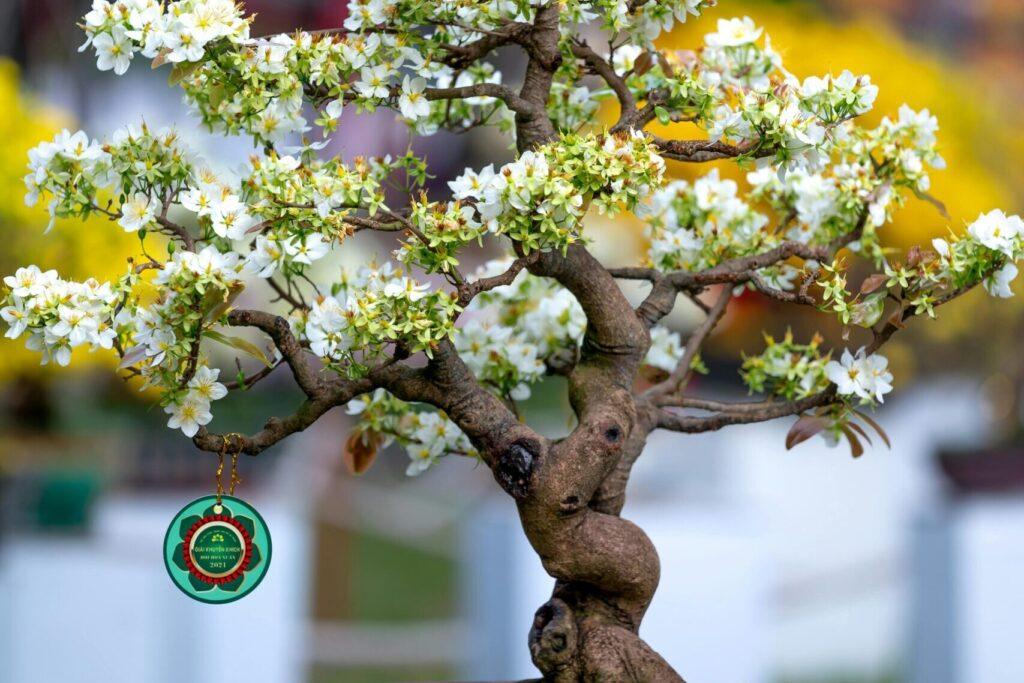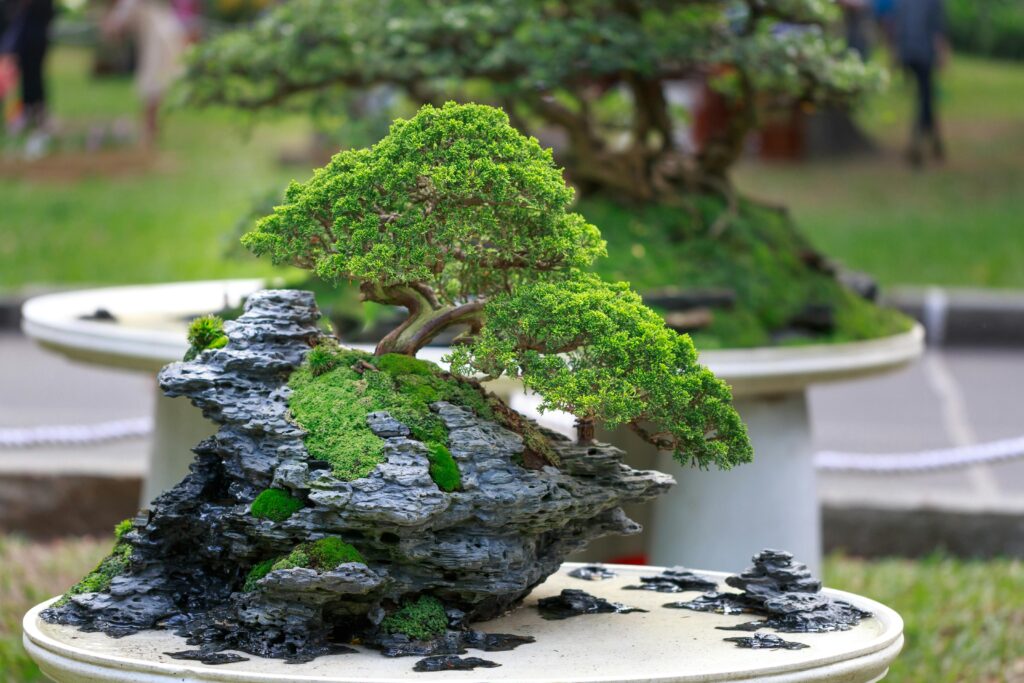The Rules of 3 In Bonsai
The Rule of 3 in bonsai is a fundamental design principle that creates natural balance and harmony. It works in two ways: dividing your tree into three vertical sections (base, middle, apex) and placing branches in an alternating left-right-back pattern. This creates depth, prevents clutter, and mimics how trees grow in the wild.
Understanding the Rule of 3
The Rule of 3 in bonsai is not merely a technique—it is a guide that helps you shape your tree with natural grace and purpose. This ancient principle has been passed down through generations of bonsai masters because it reflects the way trees grow in nature.

The Two Components of the Rule of 3
1. Vertical Division (Three Sections)
The Rule of 3 divides your bonsai tree into three distinct vertical zones:
- Lower third (The Base): The trunk foundation and exposed roots—this creates stability and suggests age
- Middle third (The Body): The primary branch structure—where character and movement emerge
- Upper third (The Apex): The crown and fine branching—the finishing touch that completes the silhouette
This vertical division creates natural proportions that are visually pleasing and help you avoid common mistakes like placing branches too high or too low.
2. Branch Placement (Left-Right-Back Pattern)
The second aspect of the Rule of 3 focuses on how branches are positioned as you move up the trunk:
- First branch: Positioned to the left, approximately one-third up the trunk
- Second branch: Positioned to the right, slightly higher than the first
- Third branch: Positioned toward the back, creating depth
- Pattern repeats: Continue this left-right-back rhythm up the tree
This alternating pattern creates a three-dimensional form that prevents a flat, two-dimensional appearance and allows light to penetrate throughout the canopy.

How to Apply the Rule of 3 to Your Bonsai
Step 1: Identify Your Tree’s Front
Before applying the Rule of 3, select the best viewing angle for your tree. This “front” should showcase the trunk’s movement and natural character.
Step 2: Divide the Trunk into Thirds
Mentally divide your tree’s height into three equal sections. Use this as a guide for:
- Root spread and trunk base (lower third)
- Primary branch development (middle third)
- Fine branching and apex (upper third)
Step 3: Select Your First Three Branches
Starting approximately one-third up the trunk:
- First branch (left): Should be your lowest and often thickest branch
- Second branch (right): Positioned slightly higher, on the opposite side
- Third branch (back): Creates depth and should point away from the viewer
Step 4: Continue the Pattern
As you move up the trunk, continue the left-right-back pattern. Space branches vertically so each receives adequate light and doesn’t crowd the branch below.
Step 5: Adjust for Your Tree’s Character
Remember: the Rule of 3 is a guide, not a law. Some trees may need slight variations based on their natural growth pattern.
Why the Rule of 3 Makes Bonsai Care Easier
Following the Rule of 3 isn’t just about aesthetics—it makes your tree healthier and easier to maintain.
Benefits for Tree Health:
✓ Better air circulation: Reduces risk of fungal diseases and pests
✓ Improved light penetration: Every leaf gets sunlight, promoting vigorous growth
✓ Easier pruning: Clear structure makes maintenance intuitive
✓ Natural water distribution: Prevents waterlogged areas
✓ Stronger branch development: Each branch has space to thicken properly
Benefits for the Grower:
✓ Clear decision-making: Know which branches to keep and which to remove
✓ Confidence in styling: Structure provides a roadmap
✓ Faster development: Trees grow more efficiently with proper spacing
✓ Professional results: Creates the refined look of mature bonsai
Common Mistakes (And How to Avoid Them)
Mistake 1: Creating Perfect Symmetry
The Problem: Placing branches at exactly the same height on opposite sides creates an unnatural, rigid appearance.
The Solution: Stagger branch placement vertically. Your left and right branches should never be at the same height.
Master Mori speaks: “Symmetry is for architecture, young one. We are creating art that breathes, not buildings. Even identical twins have different smiles.”
Mistake 2: Ignoring the Back Branch
The Problem: Focusing only on the front view and neglecting branches that grow toward the back.
The Solution: The back branch is critical! It creates depth and makes your two-dimensional tree three-dimensional. Discover the art of bonsai design.
Mistake 3: Forgetting Trunk Taper
The Problem: Applying the Rule of 3 to branches but ignoring how the trunk should narrow as it rises.
The Solution: Your trunk should gradually taper from base to apex, just like a tree in nature. Thicker at the bottom, more delicate at the top. Avoid these common beginner mistakes.
Mistake 4: Using Dull or Wrong Tools
The Problem: Attempting precision cuts with garden scissors or dull blades, resulting in crushed branches and slow healing.
The Solution: Invest in proper bonsai tools. A basic kit should include:
- Sharp pruning shears (AFFILIATE LINK)
- Concave branch cutters (AFFILIATE LINK)
- Wire cutters (AFFILIATE LINK) for removing training wire without damaging bark
- Training wire set (AFFILIATE LINK) in multiple gauges
Recommended Starter Kit: If you’re just beginning, consider a complete bonsai tool set (AFFILIATE LINK) that includes all essential tools.
Mistake 5: Following the Rule Too Rigidly
The Problem: Treating the Rule of 3 as an inflexible law rather than a guiding principle.
The Solution: Some styles (like Literati or Windswept) intentionally break the rules. Learn the rule first, then know when to break it.
Learn more about bonsai tools here
Master Mori’s Tea Break: When to Break the Rules
Master Mori refills both cups, the steam rising lazily in the afternoon sun.
“You know what’s interesting about rules? The best artists know when to break them. But—and this is important—you must understand the rule before you break it.”
He gestures to a twisted, elegant juniper on his bench.
“This one? It laughs at the Rule of 3. It’s Literati style—wild, chaotic, free. But I couldn’t have created it without first understanding balance. You see, breaking the rule for purpose is artistry. Breaking it from ignorance is just… messy.”
He takes a thoughtful sip.
“In my many years, I’ve learned this: The Rule of 3 gives you a foundation. Once your foundation is strong, you can build anything—even a crooked tower, if that’s what your heart tells you to create.”
When to Consider Breaking the Rule:
- Literati style (intentionally sparse branching)
- Windswept style (branches predominantly on one side)
- Cascade style (emphasis on downward flow)
- When working with collected trees with established character
- Creating informal or expressionist compositions
The Rule of 3 Across Different Bonsai Styles
Formal Upright (Chokkan) Application: Strict adherence to the Rule of 3 creates perfect balance and symmetry in the trunk’s vertical line.
Informal Upright (Moyogi) Application: Rule of 3 maintains balance despite the trunk’s curves and movement.
Slanting (Shakan) Application: Branch placement follows the rule, but adjusts for the trunk’s lean to maintain visual equilibrium.
Cascade (Kengai) Application: Modified—branches still alternate, but flow with the cascading trunk line.
Literati (Bunjingi) Application: Often ignored or minimally applied for artistic effect.
Rule of 3 vs. Rule of Thirds: What’s the Difference?
Many beginners confuse these two concepts. Here’s the distinction:
Rule of 3 (Branch Placement):
- Left-right-back alternating branch pattern
- Creates three-dimensional depth
- Focuses on physical branch positioning
Rule of Thirds (Composition):
- Divides the tree visually into thirds vertically
- Based on artistic composition principles
- Focuses on proportional balance
They work together: The Rule of Thirds guides overall proportions, while the Rule of 3 guides specific branch placement.
Practical Application: Your First Rule of 3 Styling Session
What You’ll Need:
- Your bonsai tree (looking for your first tree? See the 5 best beginner species →)
- Pruning shears (AFFILIATE LINK)
- Bonsai wire (AFFILIATE LINK) (optional, for positioning branches)
- Wire pliers (AFFILIATE LINK) (if using wire)
- Patience
The Process:
- Observe First (5-10 minutes) Walk around your tree. Which angle looks best? Where does the trunk have the most movement?
- Mark Your Sections Use small pieces of tape or simply visualize: lower third, middle third, upper third.
- Select Your Primary Branches Choose the three branches that will form your basic structure:
- First branch (left, about 1/3 up)
- Second branch (right, slightly higher)
- Third branch (back, slightly higher still)
- Remove Competing Branches Any branches that interfere with your primary three should be pruned. Be conservative—you can always remove more later.
Essential: Use sharp, clean concave branch cutters (AFFILIATE LINK) to make clean cuts that heal quickly. Dull tools can damage your tree and invite disease. Master pruning techniques here →
Wound Care: After major cuts, apply cut paste (AFFILIATE LINK) to promote healing and prevent infection.
- Continue Up the Trunk Keep following the left-right-back pattern as you move toward the apex.
- Step Back Often View your work from multiple angles. Does it feel balanced? Does it have depth?
Best Bonsai Species for Practicing the Rule of 3
Not all bonsai species are created equal when it comes to learning design principles. Some trees develop branches readily, forgive mistakes, and respond beautifully to styling—making them perfect for practicing the Rule of 3. Here are my top recommendations based on ten years of experience.
For Beginners: Forgiving and Fast
Chinese Elm Bonsai
Why it’s perfect for Rule of 3: Chinese Elm readily develops new branches wherever you need them, making it incredibly forgiving if you need to correct your design. They respond quickly to pruning and wiring, so you can see results within a single growing season.
Branch characteristics:
- ✓ Develops fine ramification naturally
- ✓ Backbuds easily when pruned
- ✓ Tolerates aggressive styling
- ✓ Branches thicken predictably
Best for: Practicing branch selection and removal, learning proper spacing, understanding the left-right-back pattern.
Learn how to care for Chinese Elm bonsai →
Ficus Bonsai (including Ficus Retusa)
Why it’s perfect for Rule of 3: Ficus trees are incredibly vigorous growers and will push new branches from almost anywhere on the trunk. This makes them ideal for beginners who might need to “start over” or adjust their design as they learn.
Branch characteristics:
- ✓ Grows new branches rapidly
- ✓ Handles indoor conditions well
- ✓ Aerial roots add dramatic effect to the trunk base
- ✓ Year-round growth allows constant practice
Best for: Indoor growers, those who want to see quick results, practicing the Rule of 3 multiple times as the tree grows.
Learn how to care for Ficus bonsai →
Specific guide for Ficus Retusa →
Dwarf Jade Bonsai
Why it’s perfect for Rule of 3: Jade develops thick, woody branches relatively quickly and has a very predictable growth pattern. The branches are substantial enough that the Rule of 3 structure becomes immediately obvious—perfect for visual learners.
Branch characteristics:
- ✓ Thick, sculptural branches show structure clearly
- ✓ Slow but steady growth (won’t outgrow your design quickly)
- ✓ Virtually indestructible
- ✓ Excellent for seeing the “three-dimensional triangle” effect
Best for: Beginners who want to take their time, those learning to visualize the three-dimensional aspect of the Rule of 3.
Learn how to care for Dwarf Jade bonsai →
For Intermediate Growers: Classic Refinement
Juniper Bonsai
Why it’s perfect for Rule of 3: Juniper is the quintessential bonsai species and exemplifies traditional styling. The Rule of 3 was practically designed with junipers in mind—their growth habit naturally lends itself to this pattern.
Branch characteristics:
- ✓ Classic bonsai appearance
- ✓ Responds beautifully to wiring
- ✓ Develops character quickly
- ✓ Traditional choice for formal and informal upright styles
Best for: Those ready to work with outdoor trees, learning traditional Japanese styling techniques, creating classic formal designs.
Learn how to care for Juniper bonsai →
Azalea Bonsai
Why it’s perfect for Rule of 3: Azaleas develop fine branching naturally and their spring blooms reward proper branch placement—flowers display best when branches follow the Rule of 3, creating depth and preventing clutter.
Branch characteristics:
- ✓ Fine, delicate branching
- ✓ Spectacular seasonal interest with blooms
- ✓ Clearly shows the benefit of proper spacing (blooms display better)
- ✓ Develops dense pads that demonstrate the rule’s effectiveness
Best for: Those who want to see how the Rule of 3 affects flowering, learning how proper spacing improves bloom display.
Learn how to care for Azalea bonsai →
Serissa Bonsai (“Tree of a Thousand Stars”)
Why it’s perfect for Rule of 3: Serissa’s small leaves and delicate white flowers make proper branch placement crucial—crowded branches hide the blooms, while Rule of 3 spacing showcases them perfectly.
Branch characteristics:
- ✓ Fine leaves show detailed structure
- ✓ Frequent blooming rewards good design
- ✓ Rapid growth allows multiple styling sessions per year
- ✓ Small size makes the entire tree easy to visualize
Best for: Understanding how the Rule of 3 affects light penetration and bloom production, working with smaller trees.
Learn how to care for Serissa bonsai →
For Advanced Styling: Distinctive Character
Bougainvillea Bonsai
Why it’s perfect for Rule of 3: Bougainvillea’s dramatic flowering and rapid growth require disciplined structure. The Rule of 3 is essential for managing this vigorous grower and ensuring the spectacular bracts (colored leaves) display properly.
Branch characteristics:
- ✓ Extremely vigorous growth
- ✓ Stunning seasonal color
- ✓ Requires strict structural discipline
- ✓ Shows the rule’s importance for managing aggressive growth
Best for: Experienced growers in warm climates, those wanting to see how the Rule of 3 manages vigorous species.
Learn how to care for Bougainvillea bonsai →
Black Pine Bonsai
Why it’s perfect for Rule of 3: Japanese Black Pine is the pinnacle of traditional bonsai. Mastering the Rule of 3 with pine is considered an achievement—the species demands precision and rewards proper technique with stunning aged appearance.
Branch characteristics:
- ✓ Classic traditional styling
- ✓ Long needles make spacing critical
- ✓ Develops impressive bark and character
- ✓ Techniques like candling benefit from proper structure
Best for: Advanced practitioners, those pursuing traditional Japanese aesthetics, long-term projects.
Learn how to care for Black Pine bonsai →
Specialty Styles: Creative Applications
Wisteria Bonsai
Why it’s perfect for Rule of 3: Wisteria’s cascading flower clusters require proper branch spacing to display their full glory. The Rule of 3 ensures flowers hang freely without crowding, creating a spectacular spring display.
Branch characteristics:
- ✓ Dramatic flowering
- ✓ Natural movement in branches
- ✓ Benefits from careful planning
- ✓ Shows how rule affects display quality
Best for: Those interested in flowering species, creating dramatic displays, understanding how structure affects bloom presentation.
Learn how to care for Wisteria bonsai →
Boxwood Bonsai
Why it’s perfect for Rule of 3: Boxwood develops incredibly dense foliage pads. Without proper Rule of 3 structure, the interior branches die from lack of light. This species clearly demonstrates why the rule matters for tree health.
Branch characteristics:
- ✓ Extremely dense foliage
- ✓ Clearly shows consequences of poor spacing
- ✓ Excellent for demonstrating air circulation benefits
- ✓ Small leaves reveal fine structure
Best for: Understanding the health benefits of the Rule of 3, not just aesthetic ones.
Learn how to care for Boxwood bonsai →
Additional Recommended Species
Cotoneaster Bonsai: Develops fine ramification and small berries that display beautifully with proper spacing. Care guide →
Hinoki Cypress Bonsai: Classic conifer with foliage that responds well to traditional Rule of 3 styling. Care guide →
Hibiscus Bonsai: Large flowers require excellent spacing to prevent crowding—demonstrates rule’s importance for flowering species. Care guide →
Quick Species Comparison for Rule of 3
| Species | Difficulty | Indoor/Outdoor | Why Choose It | Growth Speed |
|---|---|---|---|---|
| Chinese Elm | Beginner | Both | Forgiving, backbuds easily | Fast |
| Ficus | Beginner | Indoor | Year-round growth | Very Fast |
| Dwarf Jade | Beginner | Indoor | Clear structure | Moderate |
| Juniper | Intermediate | Outdoor | Traditional styling | Moderate |
| Azalea | Intermediate | Outdoor | Shows bloom benefits | Moderate |
| Serissa | Intermediate | Indoor/Outdoor | Fine detail work | Fast |
| Black Pine | Advanced | Outdoor | Traditional mastery | Slow |
| Bougainvillea | Advanced | Outdoor (warm) | Vigorous management | Very Fast |

Master Mori’s Species Wisdom
Master Mori sets down his pruning shears and gestures to the dozens of species on his benches.
“Young friend, do you know what I’ve learned in forty years? The best species for learning the Rule of 3 is… the one you actually have.
But if you’re choosing your first tree specifically to practice this principle, start with Chinese Elm or Ficus. Why? Because they forgive your mistakes. And trust me—you will make mistakes. I made thousands.”
He picks up a magnificent old Chinese Elm.
“This tree? I botched the Rule of 3 styling three times before I understood. But each time, it grew back, gave me another chance, taught me something new. That’s what a good teacher does—and some species are better teachers than others.”
He smiles knowingly.
“Once you’ve mastered the rule with a forgiving species, then move to juniper or pine. Those species require respect, precision, patience. But by then, your hands will know what to do. The rule will live in your fingers, not just your mind.”
Where to Start?
If you’re completely new to bonsai, begin with one of these articles:
- Best Bonsai Trees for Beginners – Complete buying guide
- How to Choose Your First Bonsai Tree – Decision framework
- Bonsai for Beginners – Start here if you’re brand new
Need indoor options?
Want to see all species?
- Complete Guide to Types of Bonsai Trees – Browse all species we cover
The Species-Rule of 3 Connection
Understanding which species work best for practicing the Rule of 3 isn’t just about ease—it’s about matching your learning style with the tree’s characteristics:
Visual Learners: Choose Dwarf Jade or Juniper—thick branches make structure obvious Hands-On Learners: Choose Ficus or Chinese Elm—rapid growth gives immediate feedback Patient Perfectionists: Choose Black Pine or Azalea—rewards careful, measured technique Indoor Growers: Choose Ficus, Jade, or Serissa—thrive without outdoor conditions Outdoor Enthusiasts: Choose Juniper, Pine, or Azalea—showcase traditional styling
No matter which species you choose, remember: the Rule of 3 is universal. Once you understand it with one species, you can apply it to any tree in your collection.
Master Mori’s Final Thoughts
The sun is setting now, casting long shadows across Master Mori’s garden. He stands, stretching slightly, and places a gentle hand on your shoulder.
“You came here today seeking a rule, but I hope you’re leaving with something more: an understanding. The Rule of 3 is not a cage—it’s a map. And like all good maps, it shows you the safest path while still leaving room for adventure.”
He walks to one of his oldest trees, a magnificent pine that’s been in his care for forty years.
“This tree taught me the Rule of 3. I didn’t teach it. Every spring, it showed me where it wanted to grow. Every autumn, it showed me what to let go. The rule was always there, in nature, waiting for me to notice.”
Master Mori turns back to you, his eyes warm.
“Three branches. Three sections. Three breaths: one for patience, one for presence, and one for the joy of shaping life with your hands. Remember this, and your trees will not just survive—they will thrive. And perhaps, just perhaps, they will teach you something about yourself along the way.”
He smiles.
“Now go. Shape your tree. Shape your spirit. And when you get frustrated—because you will—remember: even Master Mori once glued leaves back onto a tree he’d over-pruned. We all start somewhere.”
The path of bonsai is walked one step at a time. The Rule of 3 simply ensures your steps are balanced.
The Rule of 3 in Bonsai: A Word from an Old Fool Called Master Mori
“Three branches, three breaths. One for patience. One for presence. One for the joy of shaping life with your hands.”
Yes, I speak in riddles. But the bonsai rule of 3 is not a riddle. It is a key, one that unlocks the natural beauty within your tree, and perhaps, within yourself.
You see, when your tree grows in thirds, your heart begins to grow in balance.
The sun is setting now, casting long shadows across Master Mori’s garden. He stands, stretching slightly, and places a gentle hand on your shoulder.
“You came here today seeking a rule, but I hope you’re leaving with something more: an understanding. The Rule of 3 is not a cage—it’s a map. And like all good maps, it shows you the safest path while still leaving room for adventure.”
He walks to one of his oldest trees, a magnificent pine that’s been in his care for forty years.
“This tree taught me the Rule of 3. I didn’t teach it. Every spring, it showed me where it wanted to grow. Every autumn, it showed me what to let go. The rule was always there, in nature, waiting for me to notice.”
Master Mori turns back to you, his eyes warm.
“Three branches. Three sections. Three breaths: one for patience, one for presence, and one for the joy of shaping life with your hands. Remember this, and your trees will not just survive—they will thrive. And perhaps, just perhaps, they will teach you something about yourself along the way.”
He smiles.
“Now go. Shape your tree. Shape your spirit. And when you get frustrated—because you will—remember: even Master Mori once glued leaves back onto a tree he’d over-pruned. We all start somewhere.”
The path of bonsai is walked one step at a time. The Rule of 3 simply ensures your steps are balanced.

Final Tea Leaves: Your Next Steps
So now, young sprout, you understand.
To walk the path of bonsai with grace, remember:
Divide the trunk into three sacred zones.
Place the branches in left, right, back formation.
Let this structure bring harmony, ease of care, and deep-rooted beauty.
Do not aim for perfection. Aim for balance.
Now go, shape your tree. Shape your spirit.
And always… walk the path of bonsai.
Next Read our Beginners Guide to Bonsai Pruning
Related Blogs
The Rule of 3 in Bonsai FAQ
What is the Rule of 3 in bonsai trees?
The Rule of 3 is a foundational bonsai design principle. It refers to having three primary branches: one to the left, one to the right, and one to the back. These branches are spaced vertically along the trunk and create a triangular visual balance that gives your tree natural depth and flow — like nature intended.
What is the golden rule of bonsai?
The golden rule of bonsai is simple: respect the tree’s natural growth and work with it, not against it. Bonsai is not about forcing a shape but guiding the tree patiently. Care, observation, and subtle shaping over time are the keys to success.
What is the Rule of Thirds in bonsai?
The Rule of Thirds helps guide overall visual composition. It divides the bonsai tree into three vertical sections:
The base/trunk (lower third)
The branch structure (middle third)
The apex/canopy (top third)
This proportional layout creates visual harmony and keeps the tree looking balanced and mature.
What are the three elements to create a successful bonsai?
Balance – visual symmetry through branch placement and shape
Proportion – matching leaf size, trunk thickness, and pot to the overall tree
Movement – a sense of natural flow, often achieved through trunk curvature and branch angles
These elements combined give a bonsai its artistic and lifelike character.
What is the golden ratio in bonsai?
The golden ratio (approximately 1.618:1) is a mathematical proportion found in nature. In bonsai, it’s used to determine:
Trunk taper
Branch spacing
Pot size relative to tree height
It’s not a strict rule but a design guide that helps create pleasing, natural proportions — making your bonsai more aesthetically compelling.
How do you thicken a bonsai tree?
To thicken a bonsai trunk:
Grow the tree in the ground or a large training pot for a few years to encourage vigorous growth
Use sacrifice branches (left untrimmed for a time) to help swell the trunk base
Avoid over-pruning during thickening stages
Once the desired girth is reached, you can cut back and style the tree gradually into bonsai form.
Explore More Bonsai Wisdom — All Articles
Take the next step on your bonsai journey. Below you’ll find every article we’ve published, thoughtfully grouped for easy discovery.
Beginner Guides
Bonsai Techniques & Tools
Species-Specific Care Guides
New to Bonsai? Subscribe to our newsletter and download our free guide. Master Mori’s Will Show You the Way



